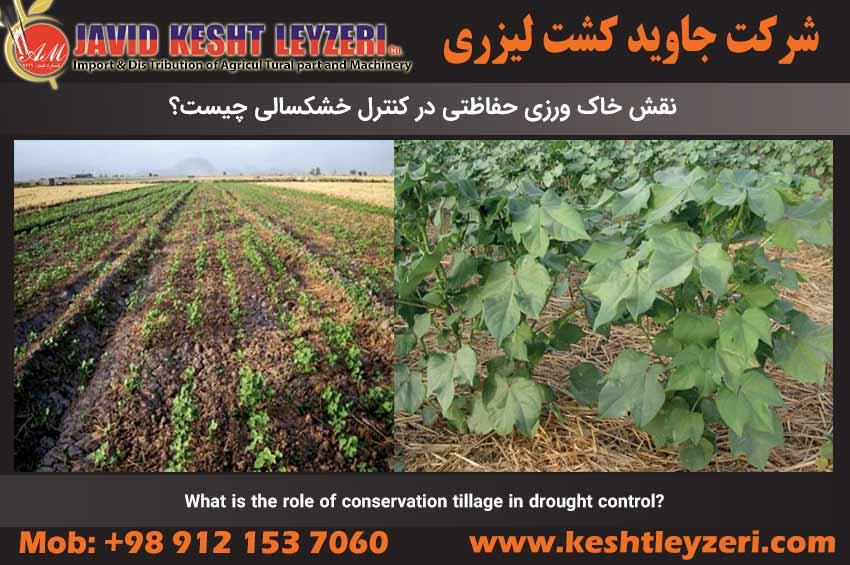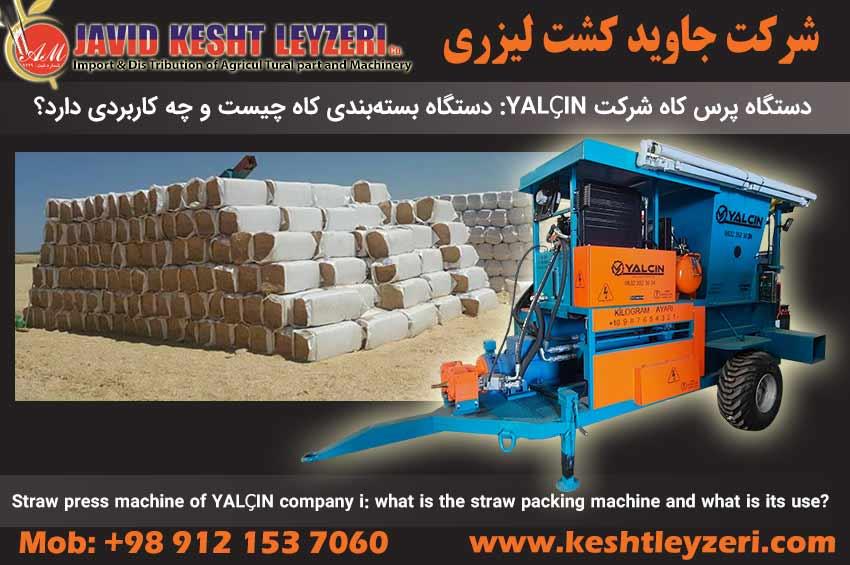
What is the role of conservation tillage in drought control?
javid keshtleyzeri Co.ltd
Table of Contents:
-
How can Conservation Tillage Help Control Drought in Iran?
-
The Impact of Conservation Tillage on Plant Residue Management
-
Disadvantages of Burning Plant Residues
In the following sections, each of the above topics will be thoroughly examined.
How Conservation Tillage Can Aid in Controlling Drought in Iran
Introduction: Iran, located in a region with a dry and semi-arid climate, faces unique challenges in agriculture. Proper soil management, including techniques such as conservation tillage, becomes significantly crucial.
Agriculture in Drought Conditions: Insufficient and uneven precipitation, coupled with high evaporation, defines the region's climate. A considerable portion of agricultural lands relies on rain-fed cultivation, necessitating specific management practices to combat climatic factors. In such conditions, preserving plant residues and implementing conservation tillage are of paramount importance to enhance soil moisture storage capacity.
Preserving Soil Values: Soil degradation and reduced fertility are fundamental issues in semi-arid regions. Transforming soil degradation into soil conservation requires sustainable farming practices and the use of conservation plowing. Conservation tillage, by preserving plant residues in the soil, improves water infiltration and prevents soil erosion.
Impact of Direct Sunlight: Adopting conservation tillage with plant residue preservation creates barriers against direct sunlight on the soil, resulting in reduced soil temperature and evaporation. This plays a crucial role in water management and increasing resistance to drought.
Enhancing Soil Structure: Conservation tillage in relatively light soils increases organic matter content and aids in the structural integrity and granulation of the soil. Additionally, organic matter serves as a nutrient source for plants, ensuring carbon availability for soil microorganisms.
Preventing Erosion and Runoff: Conservation tillage, in the long run, prevents compaction from raindrop impact and inhibits surface runoff caused by rainfall. This action allows sufficient water penetration into the soil and ensures adequate moisture supply.
In drought conditions, implementing conservation tillage emerges as a key strategy for natural resource and agricultural management in Iran. It contributes to improving soil physical properties, preserving soil fertility, and mitigating the negative effects of drought.
The Impact of Conservation Tillage on Plant Residue Management
The influence of conservation tillage on plant residue management encompasses improvements in water infiltration, reduction of soil erosion, preservation of soil organic matter, prevention of direct sunlight exposure, enhancement of soil structure, and prevention of compaction resulting from rainfall, all of which are explored below.
-
Improved Water Infiltration: Conservation tillage, by preserving plant residues in the soil, enhances water infiltration. Plant residues increase water absorption in the soil, preventing water loss through surface runoff and improving soil water reserves.
-
Reduced Soil Erosion: Preserving plant residues in the soil enhances its ability to withstand rainfall and prevents soil erosion. Plant residues act as an effective barrier against water flow, reducing the risk of water erosion and soil sedimentation.
-
Preservation of Soil Organic Matter: Plant residues in the soil serve as the primary source of organic matter. Conservation tillage with the preservation of plant residues increases organic matter content in the soil. Besides enhancing soil fertility, these organic materials act as a food source for microbes and microorganisms in the soil.
-
Prevention of Direct Sunlight Exposure: Preserving plant residues makes the soil more resistant to direct sunlight exposure. This action reduces soil temperature and the rate of water evaporation from the soil surface, contributing to moisture retention.
-
Enhancement of Soil Structure: Conservation tillage with the preservation of plant residues contributes to the structural integrity of the soil. This process increases the stability and resistance of the soil to external pressures, particularly in drought conditions.
-
Prevention of Compaction from Rainfall: Preserving plant residues prevents compaction resulting from raindrop impact. This action safeguards against the creation of surface runoff during rainfall, facilitating water penetration into the soil.
Conservation tillage with the preservation of plant residues has multifaceted effects on plant residue management. From improved water infiltration and erosion prevention to increased organic matter and the preservation of soil structure, this method aids in enhancing soil properties and optimizing the management of natural resources.
Disadvantages of Burning Plant Residues
The drawbacks of burning plant residues include a decline in soil organic matter, particularly in arid regions, reduced soil fertility and stability, decreased activity of beneficial soil microorganisms, increased water and soil erosion, loss of essential nutrients such as nitrogen, carbon, and sulfur, heightened air pollution, and adverse effects on agricultural lands, which are further examined below.
-
Reduction in Soil Organic Matter: Burning plant residues leads to a reduction in soil organic matter. These organic materials are crucial for improving soil structure and fertility. The decrease in organic matter results in nutrient deficiencies and reduced soil fertility.
-
Decreased Soil Fertility and Stability: Burning plant residues deprives the soil of organic matter and essential elements for plants. This contributes to a decrease in soil fertility and stability.
-
Diminished Activity of Soil Microorganisms: Plant residues in the soil provide a conducive environment for the activity of rhizobacteria and soil fungi. Burning these residues disrupts the habitat for these microorganisms, diminishing their activity.
-
Increased Water and Soil Erosion: Preserving plant residues helps increase soil particle density, preventing water and soil erosion. Burning residues removes this barrier, increasing the risk of water and soil erosion.
-
Loss of Essential Nutrients in the Soil: Burning plant residues results in the loss of nutrients present in these residues, such as nitrogen, carbon, and sulfur. This leads to deficiencies in plant nutrients and reduced agricultural productivity.
-
Heightened Air Pollution: Burning plant residues contributes to the release of air pollutants, including carbon dioxide and particulate matter. These pollutants increase air pollution and negatively impact air quality.
Burning plant residues, besides negatively affecting soil properties and fertility, also poses environmental challenges. Proper management and preservation of plant residues are perceived as sustainable and effective solutions.
In conclusion, Iran, facing challenges in arid and semi-arid regions with imbalanced precipitation and high evaporation rates, benefits significantly from proper plant residue management and conservation tillage practices. These methods play a crucial role in improving the physical and chemical properties of the soil, enhancing water infiltration, reducing erosion, and increasing moisture retention capacity. Additionally, conservation tillage prevents direct sunlight exposure on the soil, reducing evaporation and facilitating the increase of organic matter in the soil. Proper plant residue management is equally essential, controlling water infiltration, preserving fertility, and preventing erosion and soil degradation. Conversely, burning plant residues results in reduced organic matter, water infiltration, and increased air pollution. Therefore, the adoption of sustainable practices like conservation tillage and plant residue management facilitates improved agriculture, soil and environmental protection, and mitigates the adverse effects of drought.






